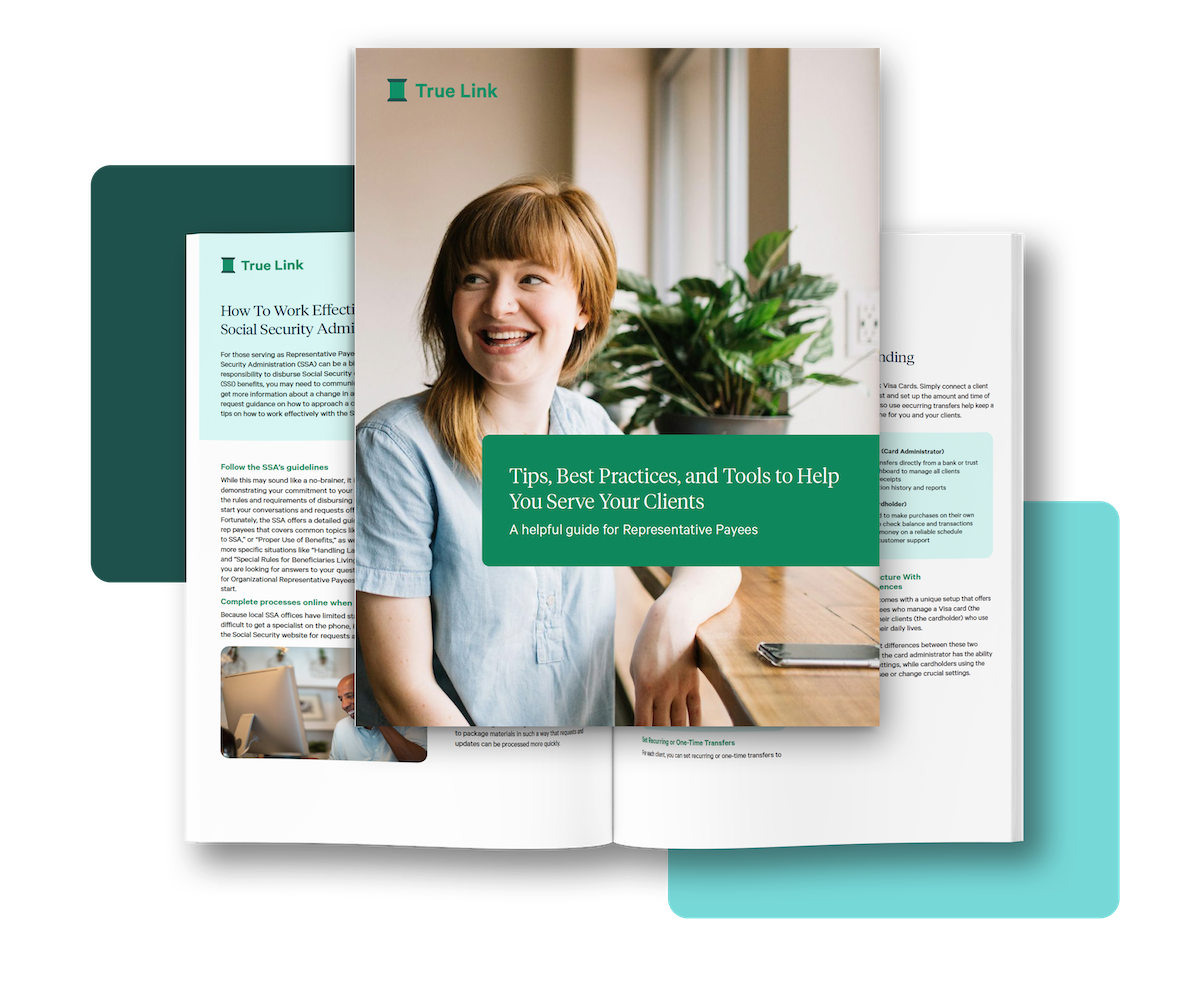Talking Credit with Your Teen: Where to Start
As many parents know, credit can be a powerful tool. When used responsibly, it can help your teen reach important milestones like renting an apartment, buying a car, or even qualifying for a job down the line. But credit can also be confusing – and when it’s not managed properly, can lead to stress, long-term debt, and setbacks to financial independence.
The good news is that if you’re a parent, you’re in a great position to help your teen build a strong financial foundation. Educating them about credit early can set them up to make confident, informed decisions for years to come.
%20(1).jpeg)
What is credit, really?
The concept of credit can feel a bit abstract when it’s first introduced. It can help to start by explaining that credit isn’t about how much money someone has; it’s about how well they manage the money they borrow. A credit score – how credit is “measured” – looks at an individual’s patterns of behavior: do they pay back what they owe, are their monthly payments on time, etc. A strong credit score signals to lenders, landlords, and even some employers that someone is reliable with debt.
Providing your teen with some examples can help make the concept more clear. Let’s compare
Person A and Person B:
Person A has $100,000 in savings but has never had a credit card or loan.
Person B has $16,000 in savings and uses a credit card regularly. Sometimes they carry a balance, but they always make at least the minimum payment on time each month.
In this example, Person B is likely considered to have better credit. Why? Because they’ve shown a track record of responsible borrowing. Sometimes having no “credit history,” like in the case of Person A, makes it difficult to borrow money because lenders have no data to go on. This can be a good reminder for your teen that credit scores are based on their borrowing and repayment behaviors, not income or savings.
How parents can support their teen to start building their credit
Because the length of someone’s credit history is an important factor in determining their credit score, parents may want to seek out opportunities for their teens to start building credit early while also teaching healthy money habits.
One option is to add them as an authorized user or co-signer on your credit card. From there, you may want to designate the card for recurring, fixed expenses – like a phone bill or streaming subscription – so your teen can start tracking spending and practicing regular payments. Talk with your teen about the value of paying off the full balance before the statement date to avoid interest and reduce their reported balance.
The cost of using credit
The biggest cost of borrowing money is interest. Some types of debt, like mortgages or student loans, have relatively low interest rates, but credit cards can charge 15 - 45% Annual Percentage Rate (“APR” is the total cost of borrowing over a year, including interest and fees).
This is another area where examples can help teens understand how interest adds up. If someone carries a $1,000 credit card balance for a full year on a 25% APR credit card, they would owe an additional $250 in interest over the course of that year. That’s why your guidance can make a big difference. Helping your teen build credit through borrowing money is important – but so is teaching them not to stretch beyond what they can afford. It's all about finding that balance together.
Here are some specific details about credit cards you can bring to your teen’s attention:
- Paying before the statement date can make a difference. Interest is calculated based on your balance at the statement date, not the due date, so when you pay off your balance before the statement date you can avoid accruing additional interest costs.
- Paying the minimum payment doesn’t mean avoiding interest. While making the minimum payment can help you avoid late fees or other penalties, the balance will still accrue interest and you’ll owe more on your next bill even if you don’t make any additional charges to the credit card.
- Automatic payments can be a useful tool. Setting up automatic payments can be a great way for your teen to pay off their balance before the statement date and help them limit interest charges. As they’re getting used to having monthly bills to pay, this can help them avoid costly mistakes from a forgotten payment. Once this is set up you may still want to set aside time every month to review the balance and make sure payments are going through.
What behaviors can help build credit
Credit scores are shaped by a few key factors, and walking your teen through them can help them make informed decisions. While each of the three reporting agencies have a proprietary way of calculating someone’s score, they take similar factors into account. Walking your teen through the common components of their credit score can help them make informed decisions about how and when to use credit:
- Payment history – The best practice for your teen is to pay every bill on time, every time. Even one late payment can have a lasting impact on their creditworthiness.
- Credit utilization – Maxing out cards can also do damage to your teen’s credit score. A good rule of thumb is to keep balances below 30% of the total available credit. That means they’d be using no more than $300 on a credit card with a limit of $1,000, for example.
- Credit history length & experience – A longer credit history often leads to a higher score – as does experience with different types of debt like loans and credit cards. This can be helpful for teens to know down the road when they’re deciding whether to close their oldest credit card or pay off their student loans early.
- Recent credit inquiries – Applying for multiple credit accounts in a short period of time can lower someone’s score temporarily, so encourage your teen to be selective about applications and only apply for what they really need.
When to use credit (and when to avoid it)
Helping your teen think through when and why it makes sense to borrow money can be a valuable role for a parent to play. Giving them examples of how debt can be a part of a healthy financial plan can help them envision the positive ways credit can be used. Here are some ideas you could share:
- Taking out student loans to invest in their education
- Buying a car to get to school or work
- Preserving emergency savings by financing a large, necessary purchase (e.g. replacing a broken appliance, or paying for moving costs associated with a new job)
Encourage your teens to ask themselves these questions when determining whether to use credit for a specific expense:
- Is this purchase helping me reach a goal?
- How does it fit in with my other financial priorities?
- Do I have a realistic plan to pay back the debt?
Just as important as knowing when to use credit is knowing when to press pause. Talk with your teen about times when borrowing may not be the right move:
- If they can’t afford the monthly payment
- If they’re tempted to use credit for non-essentials (gaming consoles, cosmetics, etc.)
- If the interest rate is too high to justify the cost
Navigating credit together
Building credit isn’t something your teen has to figure out on their own. With a little support and a few smart habits, they can build a strong credit history and learn how to manage borrowing in a way that supports – not hinders – their goals. As a parent, your guidance can help them approach credit not with fear, but with confidence.
Want to take the first step together? Teens can check their credit reports for accuracy, too. Visit AnnualCreditReport.com to download a free copy from one of the three credit bureaus.










